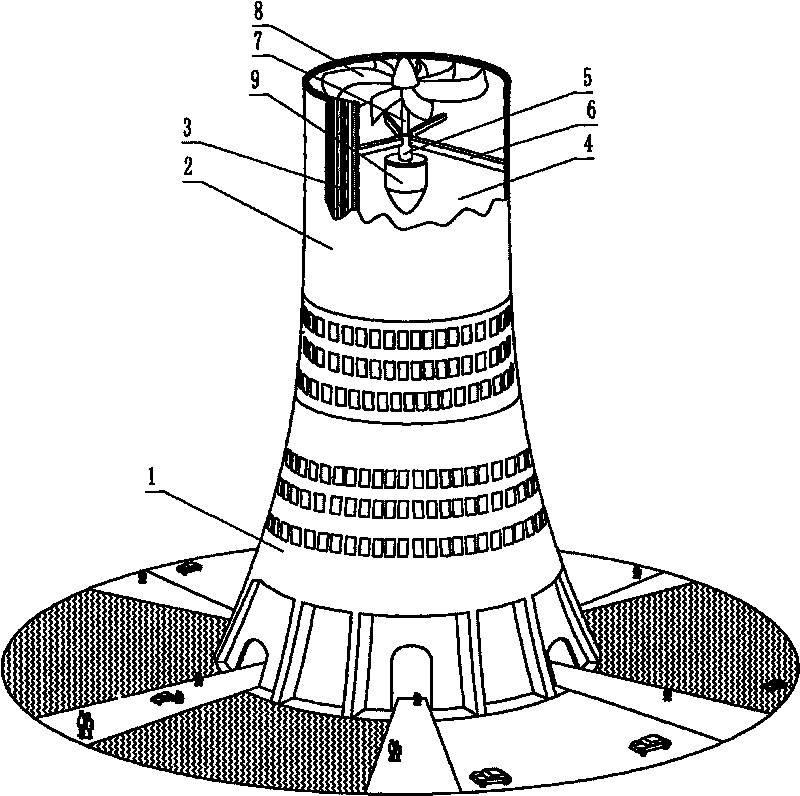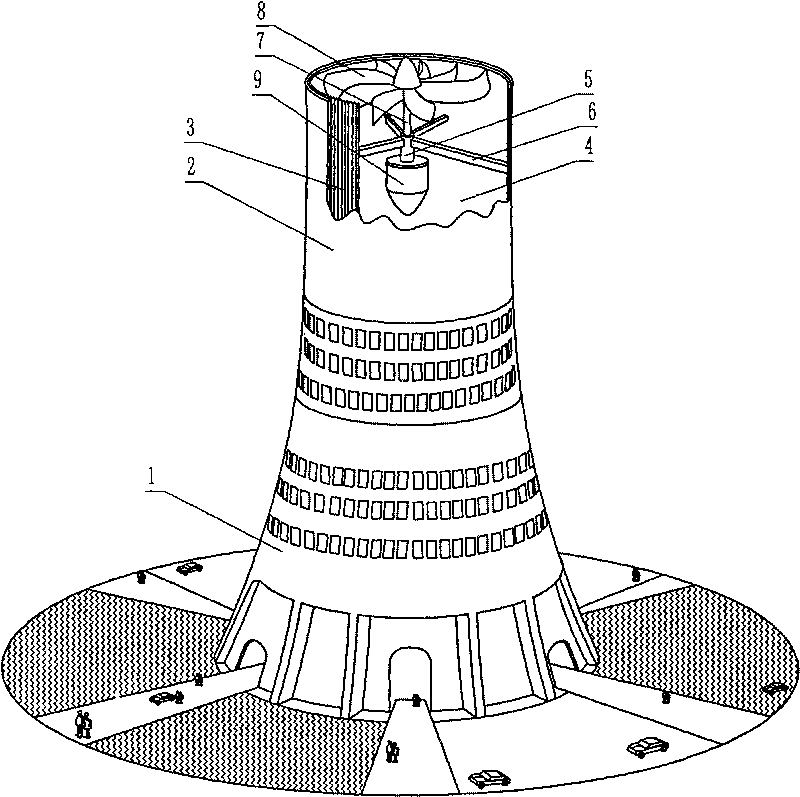Energy-saving building for generating electricity by utilizing solar thermal wind
A construction and hot air technology, applied in wind power generation, buildings, building types, etc., can solve the problems of less than 20%, blockage of upper and lower water pipes, and high cost of photovoltaic cell manufacturing and use, and achieves reasonable design, convenient use, and structure. simple effect
- Summary
- Abstract
- Description
- Claims
- Application Information
AI Technical Summary
Problems solved by technology
Method used
Image
Examples
Embodiment
[0015] Embodiment: The structure is as shown in the accompanying drawings, consisting of a barrel-shaped building body 1, a transparent layer 2, a heat-absorbing layer 3, a hot air flow channel 4, a worm gear bushing 5, a bushing bracket 6, a worm gear shaft 7, a worm gear 8 and power generation machine 9, wherein the transparent layer 2 is connected to the barrel-shaped building body 1, the heat-absorbing layer 3 is arranged on the inner wall of the transparent layer 2, and the heat-absorbing layer 3 rolled into a barrel shape forms a hot air flow channel 4, and the worm gear sleeve 5 is connected with the shaft sleeve bracket 6, and the shaft sleeve bracket 6 is connected with the heat absorbing layer 3. The worm gear shaft sleeve 5 is provided with a worm gear shaft 7, and one end of the worm gear shaft 7 is connected with the worm gear 8, and the other end is connected with the generator 9. When in use, after the transparent layer on the upper part of the barrel-shaped buil...
PUM
 Login to View More
Login to View More Abstract
Description
Claims
Application Information
 Login to View More
Login to View More - R&D
- Intellectual Property
- Life Sciences
- Materials
- Tech Scout
- Unparalleled Data Quality
- Higher Quality Content
- 60% Fewer Hallucinations
Browse by: Latest US Patents, China's latest patents, Technical Efficacy Thesaurus, Application Domain, Technology Topic, Popular Technical Reports.
© 2025 PatSnap. All rights reserved.Legal|Privacy policy|Modern Slavery Act Transparency Statement|Sitemap|About US| Contact US: help@patsnap.com


